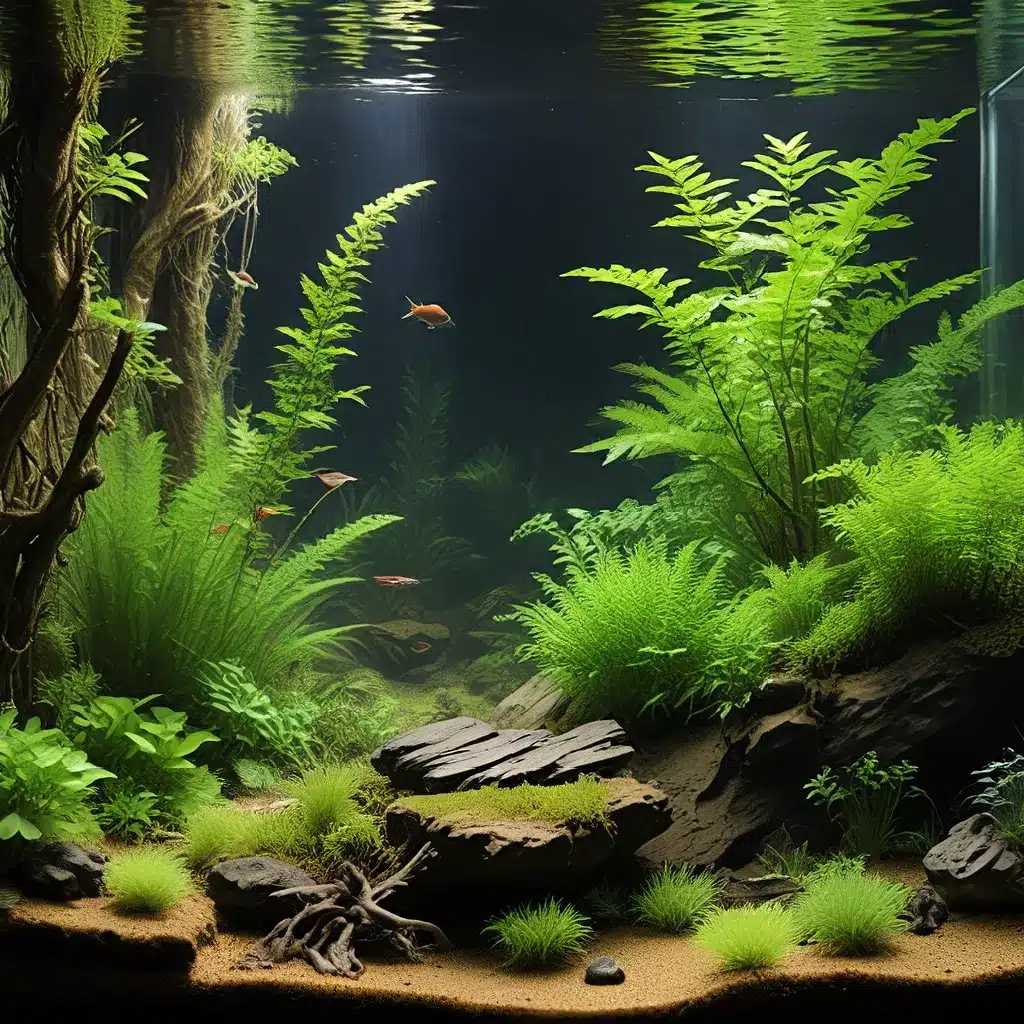
The Art of Aquarium Biotopes: Bringing the Wild to Your Home
Aquarium enthusiasts have long sought to replicate the natural environments of their favorite fish and plants, creating immersive underwater landscapes that evoke the essence of the wild. Among the most captivating and challenging of these endeavors is the biotope aquarium – a meticulously designed setup that mirrors a specific aquatic ecosystem found in nature.
Nowhere is this pursuit more intriguing than in the realm of Amazonian biotopes, where the diverse and often otherworldly habitats of the world’s largest river system serve as inspiration. From the tannin-stained blackwaters of the Rio Negro to the lush, flooded forests of the igapó, these aquatic microcosms harbor a wealth of captivating species and intricate natural balances. Replicating these complex environments in the confines of a home aquarium is no easy feat, but the rewards for those willing to take on the challenge are immense.
Unlocking the Secrets of the Igapó
One of the most iconic and sought-after Amazonian biotopes is the igapó, the seasonally flooded forests that line the banks of the Rio Negro and its tributaries. These unique habitats are characterized by their distinctive botanical softscapes, where a dense carpet of fallen leaves, seed pods, and submerged branches create a mesmerizing natural aquascape.
As described by the experts at Tannin Aquatics, the igapó substrate is a rich, organically-complex environment, serving as a vital microhabitat for a diverse array of aquatic life. Replicating this intricate foundation is crucial to successfully recreating the essence of the igapó in the home aquarium.
Replicating the Igapó Substrate
The key to crafting an authentic igapó substrate lies in layering organic materials that mimic the natural accumulation of botanical matter found in the wild. Start by incorporating a base of nutrient-rich potting soil, which will provide a stable foundation for plant growth and release beneficial tannins over time. Top this with a layer of light-colored sand or fine gravel, then intersperse the substrate with a blend of natural botanicals such as dried leaves, seed pods, and twigs.
Boiling and rinsing these botanical elements before adding them to the aquarium helps to leach out tannins and prepare them for a slow, steady release into the water column. The result is a visually captivating and functionally dynamic substrate that closely resembles the detritus-laden floors of the igapó.
Crafting the Botanical Softscape
With the substrate in place, the next step is to create the signature botanical softscape that defines the igapó habitat. Rather than relying on traditional hardscape elements like driftwood and rock, this aquascape is built around a lush, natural-looking arrangement of leaves, seed pods, and other plant materials.
Begin by carpeting the substrate with a dense layer of dried Magnolia or other broad-leaved foliage, mimicking the fallen leaves that blanket the real-world igapó. Intersperse this leaf litter with strategically placed seed pods, twigs, and other botanical accents to add depth and visual interest to the scene.
Incorporate a single piece of manzanita driftwood or a similar branch-like element, angled to suggest a fallen tree limb emerging from the dense leaf cover. This hardscape addition provides a subtle structural anchor without dominating the overall softscape aesthetic.
Finishing touches, such as the addition of a dried palm frond or a sprig of the aquatic weed Myriophyllum, can help to further enhance the sense of immersion and authenticity within the aquarium.
Stocking the Igapó Biotope
With the aquascape in place, the final step in creating an authentic igapó biotope is to stock it with a carefully selected assortment of fish and invertebrate species native to this Amazonian habitat.
The King Aquarium team recommends centering the aquarium around a school of Cardinal Tetras (Paracheirodon axelrodi), the iconic fish of the Rio Negro. These vibrant, active schooling fish will thrive in the tannin-rich, dimly lit environment and help to establish the overall character of the biotope.
Complementary species might include the Diptail Pencilfish (Nannostomus eques), Checkerboard Cichlid (Dicrossus filamentosus), and Splash Tetra (Copella arnoldi) – all of which are natural inhabitants of the igapó’s shallow, botanically-enriched waters.
When stocking your igapó biotope, be mindful of the water parameters and behavioral dynamics of the chosen species. Ensure that the pH, hardness, and other factors align with the ideal conditions of the habitat, and allow the fish sufficient space and cover to exhibit their natural schooling and foraging behaviors.
Maintaining the Igapó Biotope
Sustaining the delicate balance of an Amazonian biotope aquarium requires a thoughtful approach to water management and maintenance. Regular partial water changes using dechlorinated, reverse osmosis-treated water will help to maintain the desired tannin-stained appearance and prevent the buildup of dissolved organics.
Supplement these water changes with the periodic addition of botanical materials, such as fresh leaves or seed pods, to replenish the substrate and ensure a continuous release of tannins and other beneficial compounds into the water column.
As noted by experts, the lack of robust plant growth in the igapó is a crucial factor to consider when maintaining this type of biotope. Resist the temptation to introduce fast-growing aquatic plants, as they may disrupt the delicate balance of the ecosystem. Instead, focus on slow-growing, low-light tolerant species that will seamlessly integrate with the botanical softscape.
Thoughtful filtration is also key to sustaining the igapó biotope. Opt for gentle mechanical and biological filtration that avoids excessive water flow and disruption of the natural detrital layer. In some cases, a simple sponge filter or air-driven internal filter may be the most suitable choice.
By meticulously replicating the substrate, aquascape, and water parameters of the igapó, and stocking it with appropriate species, you can create a captivating and self-sustaining biotope aquarium that transports you to the heart of the Amazon. This immersive journey is a true testament to the remarkable beauty and complexity of nature, and the dedication of aquarium enthusiasts to bring it into their homes.

